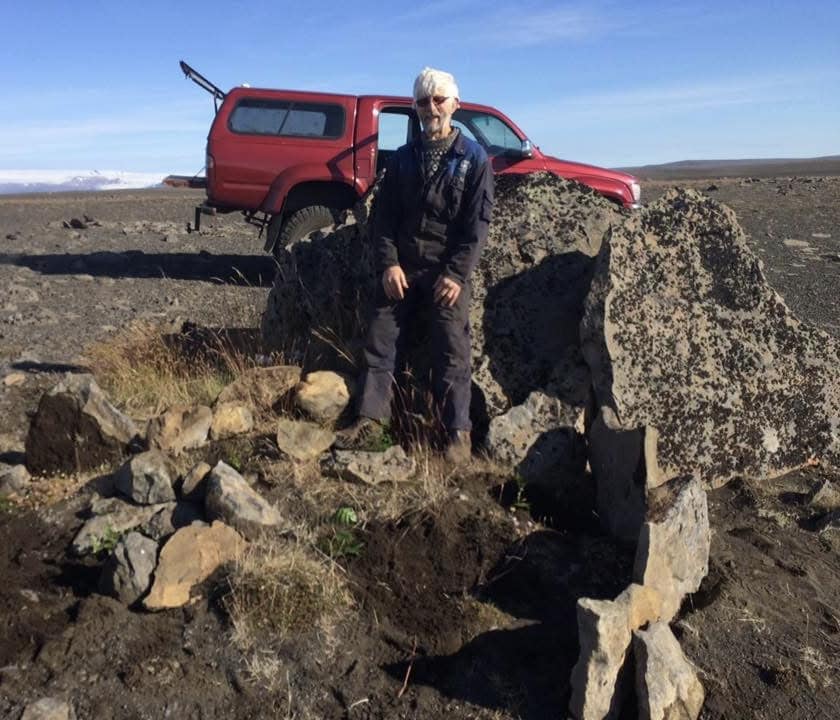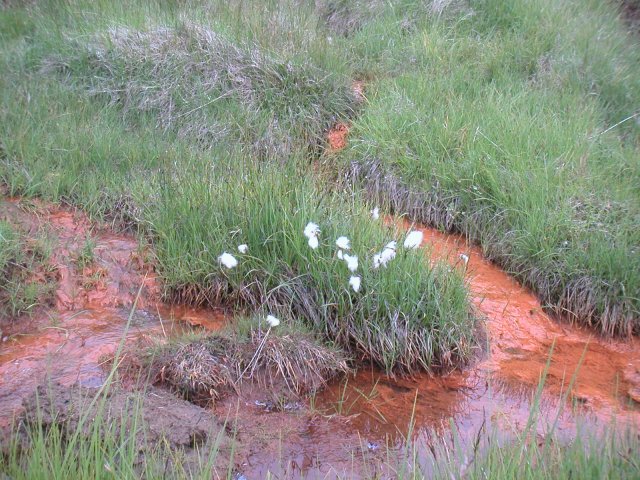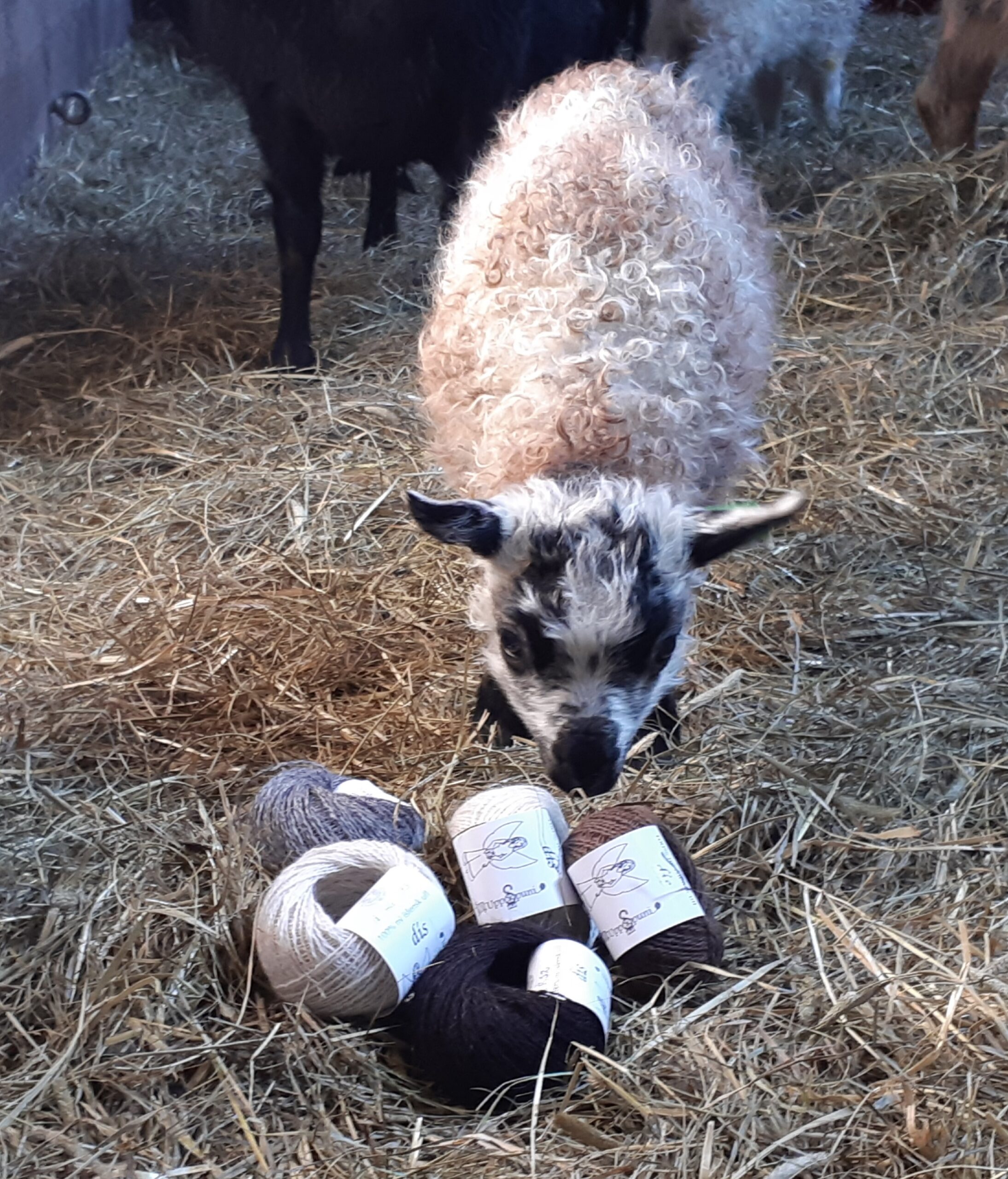- 02.03.23
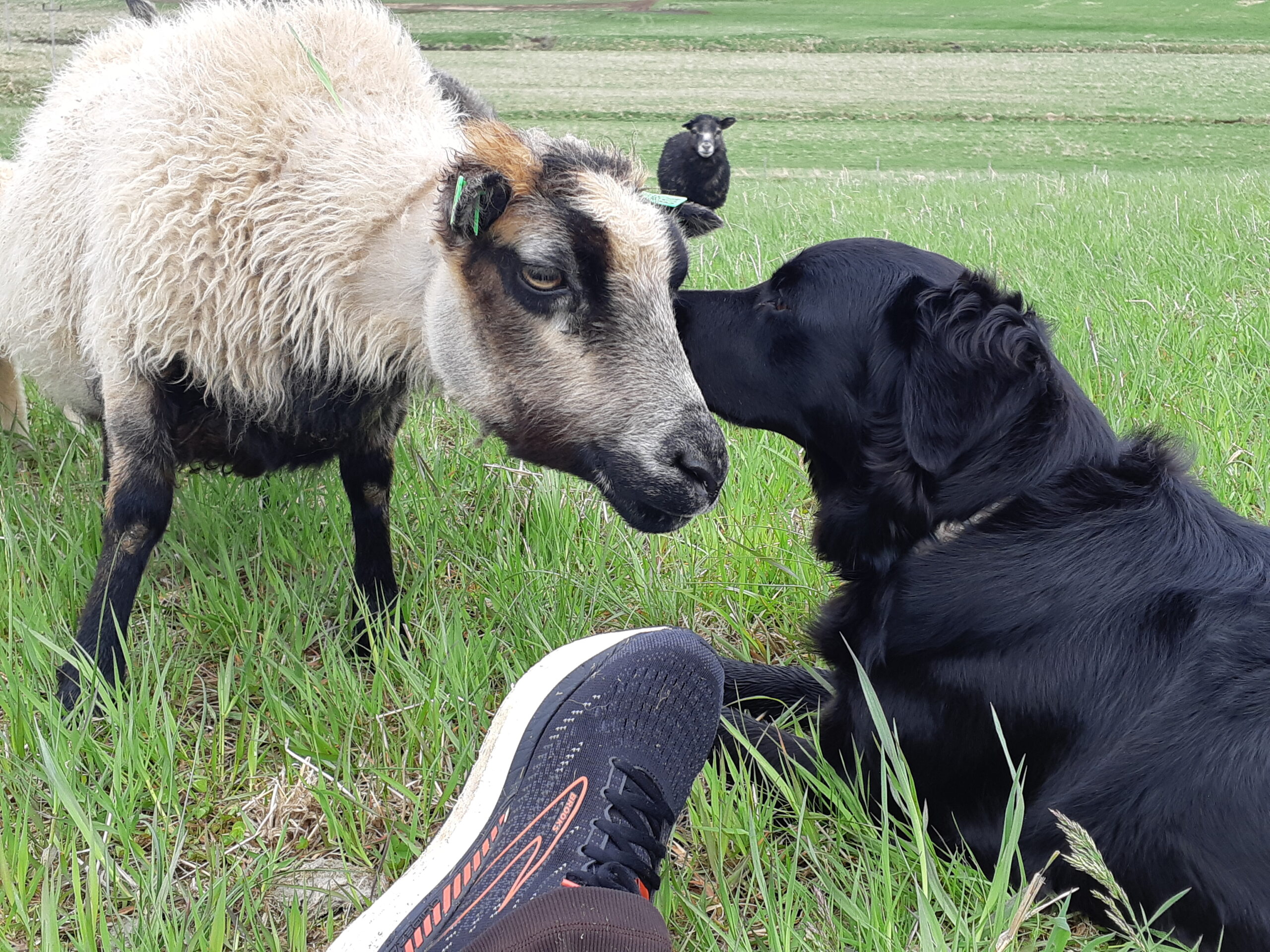
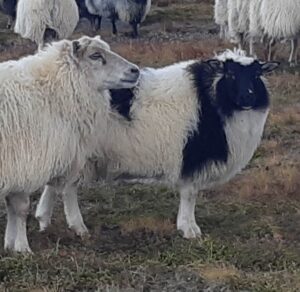
The word flecked is a huge simplification for this colour of the Icelandic sheep. Each variation of where the black (or brown) spot is on the sheep indicates the name of the colour. We might much rather call them patterns. Because most of them are similarly spread out or shown on the sheep’s body. And of course in Icelandic each and every one of them has a different name. I don’t have the word in English, but we call them; flekkótt, hölsótt, kápótt, sokkótt, arnhöfðótt, bíldótt, baugótt, krúnótt, botnótt, hálsótt, höttótt, leggjótt and those are only the first ones that come to mind. To make things even more fun, some of the colours are called differently between areas in the country. So the colour badgerface is commonly known as golsótt, but in the West they call it goltótt and in the South East they call it mögótt. I’m sorry, I know these words are almost impossible to pronounce in English, but you get the idea, right?
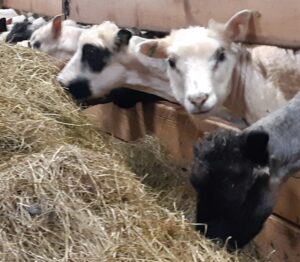
The wool on a sheep with two or more colours is usually softer than other colours. Not always but so more often, that we can say it is usually softer. When a sheep with two colours also has a “clean” white colour, (no spots in it) the white part is very white, and very soft, and the black part is also very black and very soft. This I find very interesting, because for many years now, farmers in Iceland have not gotten a good price for double coloured wool, some years even nothing at all. It is so low priced that some farmers don’t see the point in having these sheep in their flock and few of them don’t shear them until in the spring shearing, that way cutting down the cost in shearing by one. Usually the sheep are shorn in the fall to get the best wool to process and then again in spring to make them feel better over the summer and also to guarantee a good quality wool the following autumn. But with the flecked sheep it sometimes is different. It has been graded as third class wool and a lot of it has been used for carpet making.
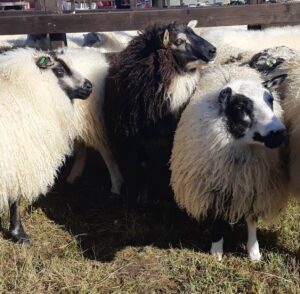
But the double coloured wool is so soft, and it can give variations in colour you can only dream of otherwise. And because they are so different in patterns the yarn becomes unique. No one is going to turn up in exactly the same looking sweater as you will when you get yarn from those guys. I know I am always saying that this and that is one of my favourite wool to work with. Well that is true, because I love wool. But the flecked wool! It is a true pleasure. When I get a good looking, clean fleece with more than one colour that is just fantastic. – and nothing more to say about it.
I believe that many of you have heard about the leader sheep in Iceland?! If not, I am going to tell you about them.
Their existence has two stories behind them. One is like this:
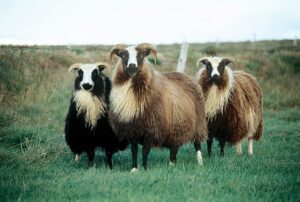
A farmer came to see on his flock of sheep and he noticed a ram with them that he had never seen before. It was black with a white star in it’s forehead and around the neck, the horns were long and wide, intelligent eyes looked at him and the feet were long and strong. In a short minute they looked at each other and then it disappeared. In the spring his ewes started lambing. Some had white lambs, obviously from the ram he had used himself, but some of them had lambs with long legs, wise eyes and double colour on their fleeces. Not at all looking like the ram that had been in the flock. The story says that the hidden people that lived close to the farm lent their ram to the farmer to thank the farmer for a favour he had done for them. The farmer kept some of the lambs and bred them on and they made a very good and wise sheep.
The other story says:
In the old days when there was fewer possibilities to gather hay for winter, farmers had their sheep grazing over winter months around their farms and just put them inside over night. That meant more working together with the sheep, learning how they behaved and seeing that some of the sheep looked more wise than others. They helped when the flock needed to be herded by going in the front to the pastures and then back home. The farmers realised that it was useful to have one or two, so they bred specially for the gene.
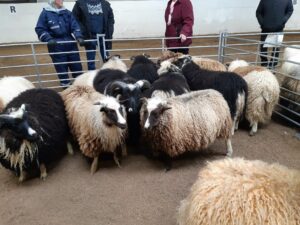
The leader sheep, as the name indicates, leads the flock. Usually sheep have great instinct of herd. If one sheep moves, all the other follow. But the leader sheep is wise and helps leading the flock if it knows where to go. It can also predict weather and if the leader sheep suddenly appears at home and the weather looks good to you, – it is wise to go out and herd the other sheep and get them to a shelter.
But when they are not trained, they can make so much trouble. Because of their long feet; they can run fast and they can think faster than the farmer, so if it sees that it is supposed to go home and it doesn’t want to… – oh boy. You better have a good horse. Maybe both of those stories are untrue, but the leader sheep has been with the Icelandic farmer as long as the oldest can remember… and they remember a lot.
It has two colours in it’s wool. The wool is softer than we find in wool form the other sheep and the story says; that if you wear a sweater made with the leader sheep’s wool, you will always find your way home.
There is a museum dedicated to the leader sheep in the North of Iceland, run and managed by my friend Daniel Hansen, who has collected information and things about the leader sheep and made from it’s products. Going there is worth a visit.
I don’t have many sheep with flecks, but I am going to turn that around and breed more for double coloured sheep. But I have a few that are mouflon (botnótt) and badgerfaced (golsótt) – The photo on the front of this blog is of a badgerfaced sheep. My dear friend Þjóðhildur, talking to my dog Dimma and you can see my foot also on the photo. This sheep is very wise and she has the leader sheep instinct. But she is not registered as a leader sheep. Sometimes when working closely with animals you start to think that they know more than you do and Þjóðhildur is one of them.

